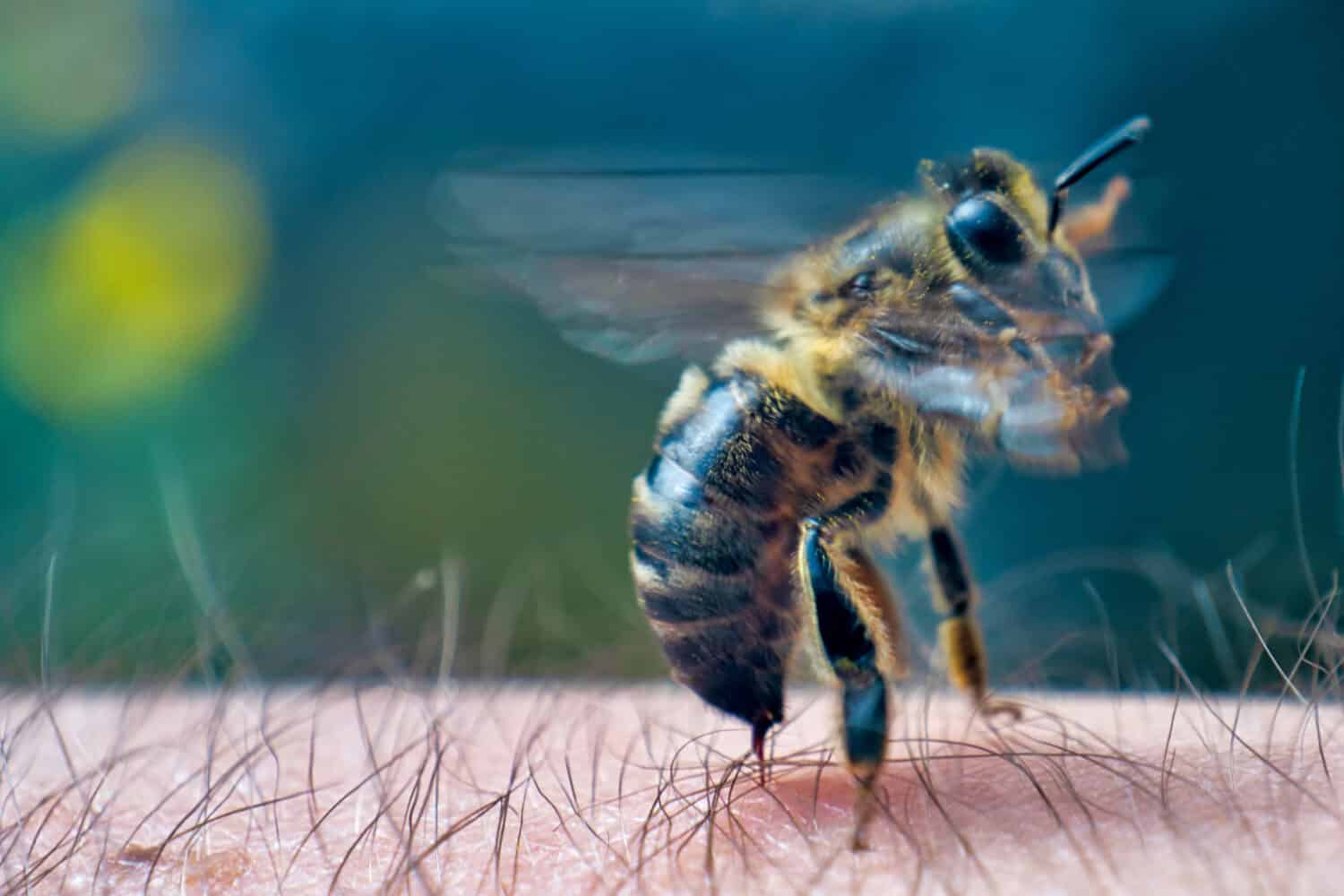Nathan Stidham is a Virginia state trooper by trade and a beekeeper by hobby. So, it’s not uncommon for Stidham’s honeybees to sting him from time to time. And that’s precisely what happened on June 27, 2023, as Stidham was checking on his beehives in the Virginia town of Wise.
“I got tagged on the side of my head by a couple of bees, and I felt fine,” Stidham told a reporter. “If you keep bees, you get stung pretty often, and it’s never bothered me before.”
On this day, it did. As he drove in his truck with his 7-year-old daughter, Audrey, Stidham glanced in the rearview mirror to see an astonishing scene — his face was turning beet red. Stidham pulled over. He put his head on the steering wheel and called 911. Then he passed out. “Daddy, wake up,” the dispatcher heard his daughter cry over the phone, “Open your eyes…”
Stidham was out cold. According to news reports, Audrey reached for her dad’s phone and got on the line with the emergency dispatcher. The dispatcher talked her through the crisis. Police arrived, EpiPen in hand, and removed the stingers.
Getting the Point
Bee stings can be incredibly painful and, in some instances, fatal. But what set off Stidham’s honeybees on that hot June day? Although it’s impossible to get inside the head of the honeybees, stinging insects do so for two main reasons: to protect themselves and to prey on others. While bees sting people for the former, there are a few reasons a bee might feel like it needs to protect itself.

Bees, such as this honeybee, sting people as a form of protection.
©IHOR SULYATYTSKYY/Shutterstock.com
1. Self-Defense
Honeybees and bumblebees sting not because they are aggressive. They’ll sting only when threatened. Bumblebees sting once and go merrily on their way — unless the victim swats them into oblivion. On the other hand, honeybees sting once and then succumb to a horrific, Stephen King-novel-like death (which we cover later).
For their part, wasps and hornets, which are not bees but close cousins, sting multiple times to defend themselves or to subdue prey. Wasps also sting when they feel threatened, even though no such threat may exist.
2. Hive Preservation
In addition to personal self-defense, bees sting when defending their hives, which is why it’s important to leave beehives alone.
In hives, male bees, known as drones, do not have stingers, while female worker bees do. They are not shy to use them when danger lurks. Queens will also battle other queens for dominance.
3. Alarm Pheromones
Bees also release pheromones when stinging. These chemicals trigger an alarm with other bees. As a result, bees become increasingly agitated at the first sign of trouble and will join in on the attack when defending their home.
A Terrible Death
Depending on your point of view, the stingers are at the center (or end) of a bee sting. Located at the end of its abdomen, a bee’s stinger is an interesting weapon that has evolved from an egg-laying tool to a pointed stiletto. Yet, for the honeybee, it is an imperfect design. Its stinger is hollow with two rows of barbed blades.
Once the honeybee sets its stinger into the arm, leg, or even ear of its human victim, it will try to extricate itself by pulling away. The jagged lancets don’t budge, however, as they anchor the stinger to its victim. As a consequence, the honeybee will pull away until its lower abdomen rips open, spewing the bee’s muscles, glands, and venom sac. The result is a monstrous hole at the end of the abdomen that ends in the bee’s death. The pain does not stop for the person stung, however. The stinger continues to release venom. That’s why you should quickly remove the stinger after getting stung.
Unlike the honeybee, bumblebees have a smooth stinger. No self-amputation for them. They can fly away to sting another day.

When a honeybee stings a human (or similarly thick-skinned mammal), its stinger becomes lodged in the skin, disemboweling the insect when they attempt to remove it.
©kanoksak neamsum/Shutterstock.com
Why Do Bee Stings Hurt?
Think of a bee’s stinger as a hypodermic needle. It pumps a venomous cocktail of peptides and enzymes into its victim. Once the bee injects its venom, a peptide called melittin grabs onto the victim’s red blood cells, causing immense pain. As it does, an enzyme called A-Hyaluronidase wages war against the victim’s cells allowing the venom to spread as another enzyme — Phospholipase-A — wreaks havoc on other biochemical reactions.
As the venom attacks the body’s cells, the cells retaliate by releasing histamines to battle the invaders. Histamines, however, increase blood flow, flooding the body with venom. While the toxic substances injected by the bumblebee and the honeybee are a bit different, the reactions are the same. Just ask Nathan Stidham. Although he had been stung numerous times, the incident in June 2023 resulted in a severe allergic reaction — one that left him unconscious along the side of the road.
Thank you for reading! Have some feedback for us? Contact the AZ Animals editorial team.








